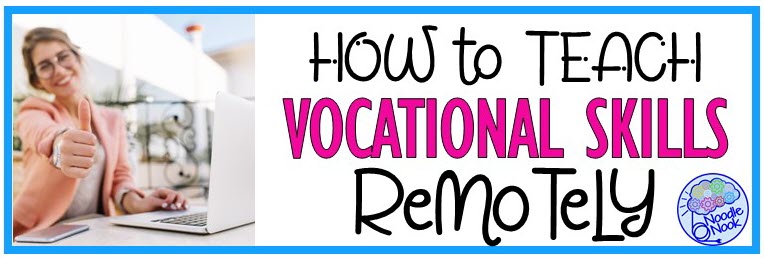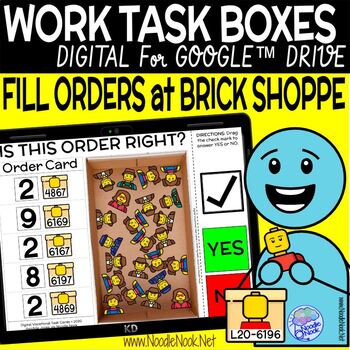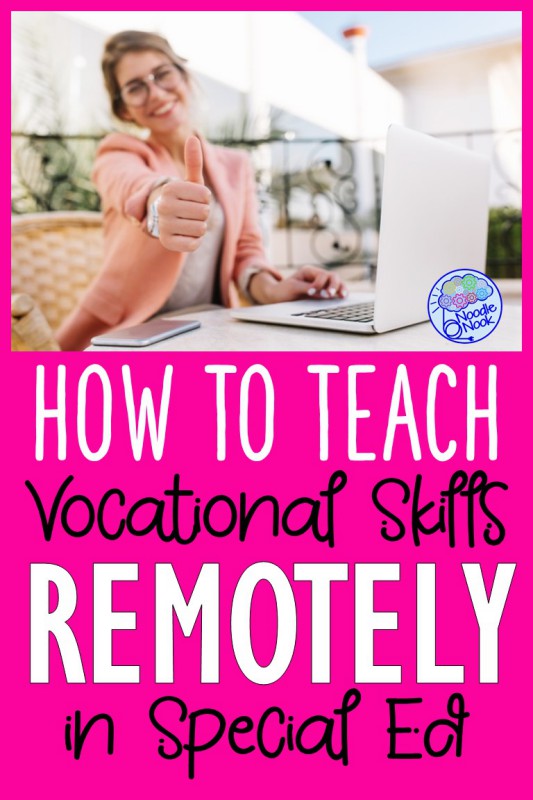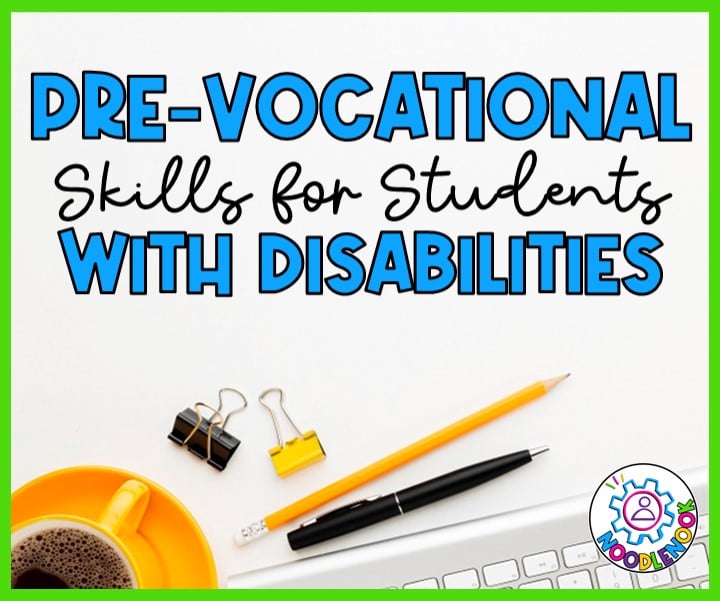There are so many teachers and students doing remote learning. And there is a possibility that some students with disabilities (and vulnerable immune systems) may continue some level of remote learning for the foreseeable future. That brings up a really critical question we all need to know: How to teach vocational skills remotely in Special Education.
It has been a challenge.
Seriously.
All of this has been a challenge.
Problem is, up until now, most of our vocational training has been in the community or with hands-on tasks in the classroom. That is hard to replicate on a Zoom. 😶
If you have been struggling with how to teach vocational skills remotely and how to manage video job prep, then we have 6 simple tips for you!
Use a Clock In System.
Personally, I have found that it’s super easy to set this up with a Google Form. I use the student’s pictures to help them clock in even when they can’t read. I have the ‘Clock’ saved as a favorite on their browser (that required a couple of very detailed discussions). But after that, it was easy. Plus, most jobs will need you to clock in and out, so this is good practice.
Provide Students with a ‘Cross Check’ Before Logging On.
Grooming is a HUGE part of the underlying vocational training process. Personal care skills are what helps our students keep their jobs in the postsecondary. So, to support them in building those skills, I have a simple checklist of things to check before the session starts.
You can personalize this process for each student or use a general checklist for everyone. That can include: are you wearing a clean shirt? Have you used deodorant, have you washed your face, and have you brushed your teeth?
You can add everything necessary to make sure your student is ‘work ready’. And, as an aside, make this list a little generic so a student starts to internalize the process for everything, like going to the store or church.
Use Digital Vocational Training Activities.
I love digital vocational training activities! Some have digital manipulatives that students can move around. Others are straight-up errorless touch. That means there are multiple levels to support our multi-skilled classrooms.
Using digital vocational activities has really helped me teach vocational skills remotely. It has actually been great! My students love the activities, like working at a Pet Shop, at the Lego Store, or in a Game Store.
I love that I can get them working at home without having to make a bajillion take-home task boxes. I also really love that when they crossover and return to the classroom, the tasks are familiar. That makes my classroom management much easier and the transition less upsetting for students.
Ask Students to Pop Back In For Help.
I have a paraeducator in my classroom who uses a breakout room as a separate learning space. It’s like another resource in a virtual class, just like you would have in person. She uses that virtual classroom space when students need some help with something. It’s like the real-life version of a help desk.
There are a couple of students who stay in that space while working so they always have a helper nearby while I am working with a larger group or teaching new skills. So, consider how to use break-out rooms during your virtual teaching.
Promote Social Interactions with Breaks and Chat.
Time to get those breakout rooms back in action! Schedule a ‘break’ where students can talk with one another in those breakout rooms. You can assign them (and assign the teacher or para to supervise) or you can have the rooms open and let students choose who to hang out with.
It’s just like at work!
Social interactions and social skills are actually huge in the workplace. It’s so important that we train our students how to take a break. Consider how to practice social interactions as you decide how to teach vocational skills remotely.
Continuously Target Soft Skills.
When we do vocational training, we are doing so much more than just isolated tasks. We are looking to build social skills, communication skills, and personal hygiene skills (all mentioned above). We are also looking to target soft skills, like punctuality, problem-solving, and knowing how to ask for help.
As you are deciding to teach vocational skills remotely, think of how you can include clock skills.
How can you throw in purposeful problems so students have to find solutions?
And how can you make the student have to seek assistance and find support (as well as advocate for themselves)?
All of this will help make your remote vocational training as meaningful as your in-person class.
Recap:
Well, there you have it! 6 tips on how to teach vocational skills remotely. It is not easy… but teaching students with disabilities was never easy. We want to make sure we are meeting student’s needs, making our time with them meaningful, and keeping them engaged in learning.
You know… easy stuff 😶.
As you think about how to teach vocational skills remotely, consider how these resources can support your instruction:












